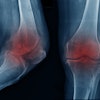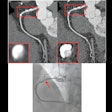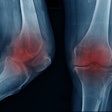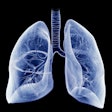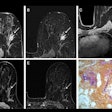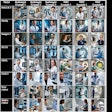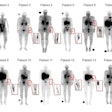Effects of hyperglycemia on FDG uptake in human brain and glioma.
Ishizu K, Nishizawa S, Yonekura Y, Sadato N, Magata Y, Tamaki N, Tsuchida T,
Okazawa H, Miyatake S, Ishikawa M, et al.
This study evaluates the effects of hyperglycemia on fluorodeoxyglucose (FDG)
uptake in the human brain and in brain tumors. METHODS: We performed glucose
loading during FDG PET studies in nine patients with brain tumors (eight gliomas
and one brain metastasis) and one with resected glioma. Two FDG PET scans were
obtained in all cases within 1 wk in a control state and with glucose loading by
intravenous infusion of 10% glucose solution. Serial arterial blood sampling was
performed in all cases to obtain fractional uptake of FDG normalized by the
plasma integral uptake of radioactivity (FU). RESULTS: In all nine patients with
brain tumors, the tumor was depicted more clearly with glucose loading than in
the control state. Glucose loading decreased FU in the cerebral cortex (54.2%
+/- 13.8%) nearly in inverse proportion to the plasma glucose level, while the
tumors showed a decrease (42.5% +/- 15.6%), resulting in an increased
tumor-to-cortex ratio by 26.0% +/- 5.7%. Fractional uptake in the cerebellum,
white matter and the edematous area also decreased by glucose loading (53.9% +/-
13.2%, 49.6% +/- 10.3% and 34.9% +/- 9.6%, respectively). CONCLUSION: These
results demonstrate the different effects of hyperglycemia on normal brain
tissue and on tumor, suggesting that glucose loading may be a valuable adjunct
to FDG PET to enhance detection of recurrent or residual brain tumors.
NucMed > PET > PET tumor imaging > CNS
J Nucl Med 1994 Jul;35(7):1104-9 (Comment in: J Nucl Med. 1995 Apr;36(4):711-2)
Latest in Home


